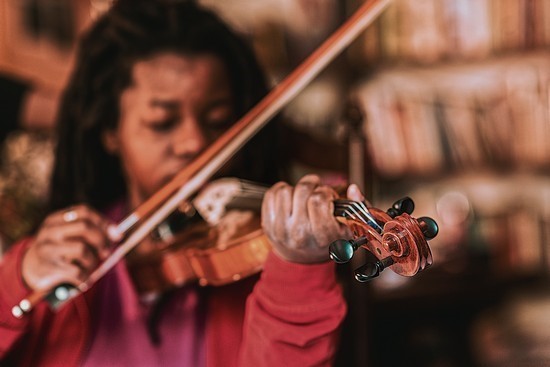“There
is some sort of connection between the
kid and the sport," "they are
really good and love the sport," or "this
kid is really talented!”
are all phrases that have been said frequently about many young athletes. But
what is talent? Who can identify talent? And at what age can we determine if a
child is talented?
اضافة اعلان
Baker
et al. identified talent as an innate characteristic and something that exists
and can be identified early in an athlete's career. If identified, this talent
can predict later success and expertise.
This
definition implies that talent cannot be “forced,” nor can someone be trained
or learn how to be talented. If it can be identified early and developed, it
can predict future success — it is considered a talent.

Talent
is not considered sport-specific because abilities developed at a young age can
reflect the
child’s motor skills. It is widely accepted that children should be
exposed to multiple sports throughout their childhood to develop lifelong
athletic activities, avoid athlete burnout, and maximize athlete potential.
Additionally,
children should work on developing their motor skills and physical literacy.
The Canadian Long-Term Athlete Development (LTAD) model states that before the
age of 12 for boys and 11 for girls, there is no need for sport-specific skills
and fitness (except for a few early specialization sports such as figure
skating).
With
that in mind, coaches specializing in talent identification have extensive
knowledge and expertise in the “superior” level of agility, balance,
coordination, flexibility, and cognitive and mental benchmarks. Unfortunately,
talent alone is not enough; with talent identification comes talent
development.
Bill
Beswick, a leading sports psychologist, explains that there are three types of
players. Player A is technically and physically superior as a player but weak
mentally. Player B is mentally superior but is weak technically and physically.
Player C is superior technically, physically, and mentally.
Beswick
contended that players similar to Player C should be trained differently,
confirming that talent identification is not the final step but the first step
before targeting the right development plan.

Another
factor that is examined concerning talent identification is relative age. A
group of researchers highlighted the difficulty of accurately predicting future
performance abilities, coupled with the complexities of the athlete development
process. This can result in biases during the recruitment process into talent
development pathways (Baker et al.,
2018; Till and Baker,
2020). One such selection bias that has been
consistently highlighted in the literature is relative age effects (RAEs;
Barnsley et al.,
1985; Smith et al.,
2018).
Relative
age effects illustrate that when athletes are banded according to
(bi)annual-age groups, those who are born near the beginning of the selection
year (i.e., September 1 in the UK) are often overrepresented compared with
those who are born toward the end (i.e., August 31; Cobley et al.,
2009). Possible explanations that have been
offered for this effect include enhanced physiological and cognitive maturity
of relatively older athletes, which allows them to outperform their younger
age-matched peers (Doncaster et al.,
2020).
An
important milestone for athletes is their Peak Height Velocity and puberty.
Literature suggests that PHV can occur during different stages of puberty, and
therefore, PHV and puberty are considered different milestones.

The
Canadian LTAD suggests that strength, endurance, and sport-specific training
should occur at the age of 12 for boys and 11 for girls, showing that young
athletes should begin sport-specific training and fitness at puberty.
The
LTAD also suggested that the optimal age to develop skills is 9–12 for boys and
8–11 for girls. This is also supported by a study published by K. Janacsek, J
Fiser, and D. Nemeth titled “The Best Time to Acquire New Skills: Age-related
Differences in Implicit Sequence Learning across Human Life Span”.
The
study investigated implicit skill learning in subjects between 4–85 years of
age. This learning underlies motor, cognitive, and social skills across the
life span. Subjects were presented with an implicit probabilistic sequence
learning task measured by raw reaction time (RT). The study found that the
difference in implicitly learning high versus low probability events exhibited
a rapid decrement around the age of 12.
Athletes
can rapidly develop physical strength and endurance during puberty while having
a lower learning curve for skills during the same period. This also reflects
that young athletes considered to be “late bloomers” actually have a bigger
“window” to develop skills. Conversely, young athletes considered to be “early
bloomers” within their community can have a physical advantage in terms of
strength and endurance compared to their peers. Such differences can confuse
people into thinking someone is talented physically while they are only early
bloomers. With the right strength and endurance plan, others might consider
someone to be a sport-specific or technically “gifted” player, while they might
only be a late bloomer.
Ultimately,
it is always best for everyone to give children the chance to play and enjoy
sports. Before judging a player, their future, and their decisions, it is
important to consider the biosocial perspective and understand the science
behind sports, talent identification, and talent development.
Read more Education
Jordan News



